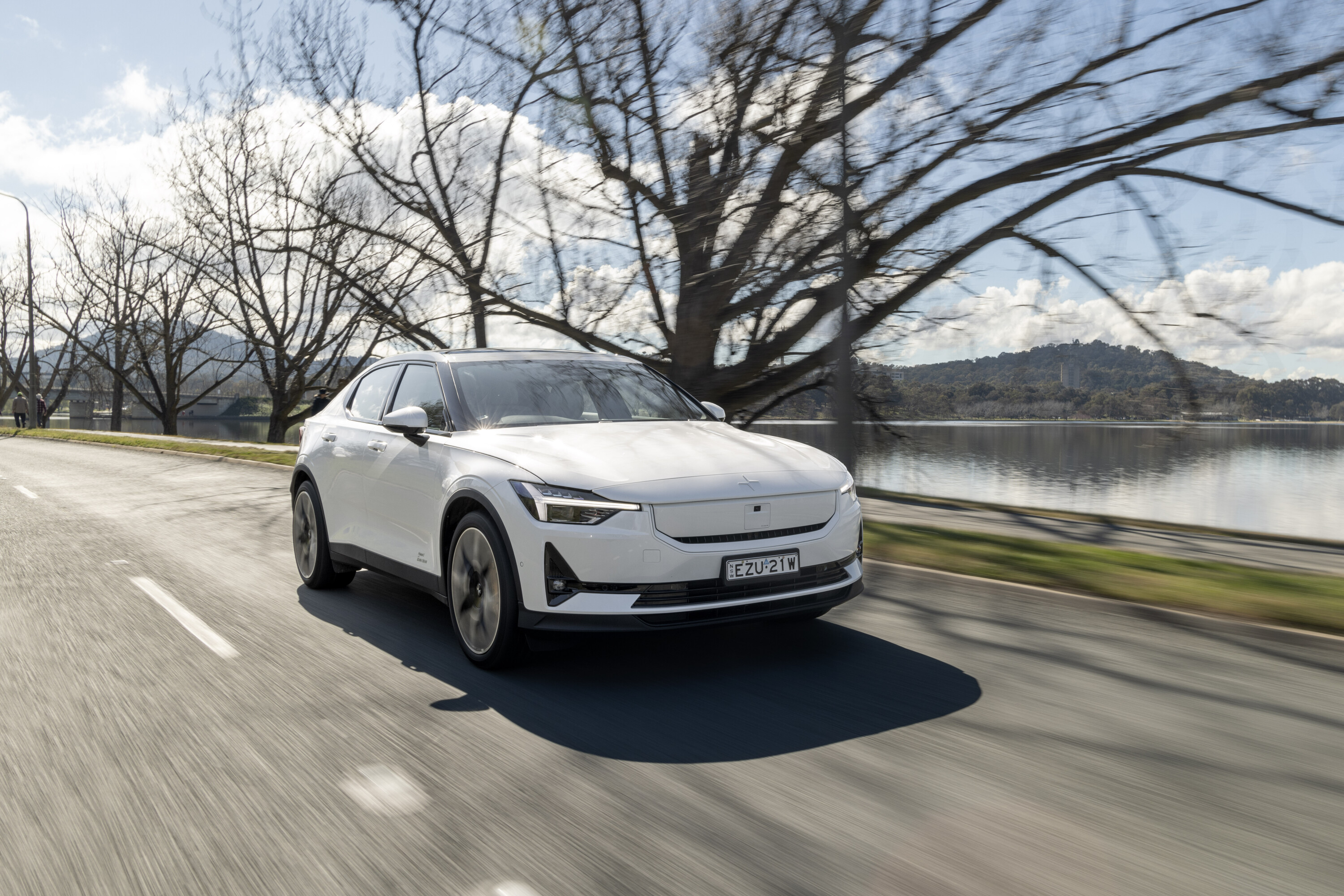
Score breakdown
Things we like
- Much-improved ride quality
- Same sexy cabin design with excellent tech integration
- Rear drive layout heightens driver involvement
- Easy ownership and faster charging
Not so much
- Cramped and dark rear seat
- Dual Motor Performance still thirsty for electrons
- Limited cabin storage
- Adaptive cruise control still optional
Almost exactly 18 months after its Australian release, the Polestar 2 has been brought in for a major update.
Not for the vanity tweaks usually associated with a mid-life facelift, mind you, the Polestar 2 is almost entirely unchanged in appearance.
Blink and you’ll miss it. What’s underneath though? That’s a different story.
The Swedish-designed, China-made Polestar 2 now claims the longest WLTP driving range of any car sold in Australia, beating the 100kWh-plus battery-packed Mercedes-Benz EQS (631km) and the Tesla Model 3 LRDM (602km).
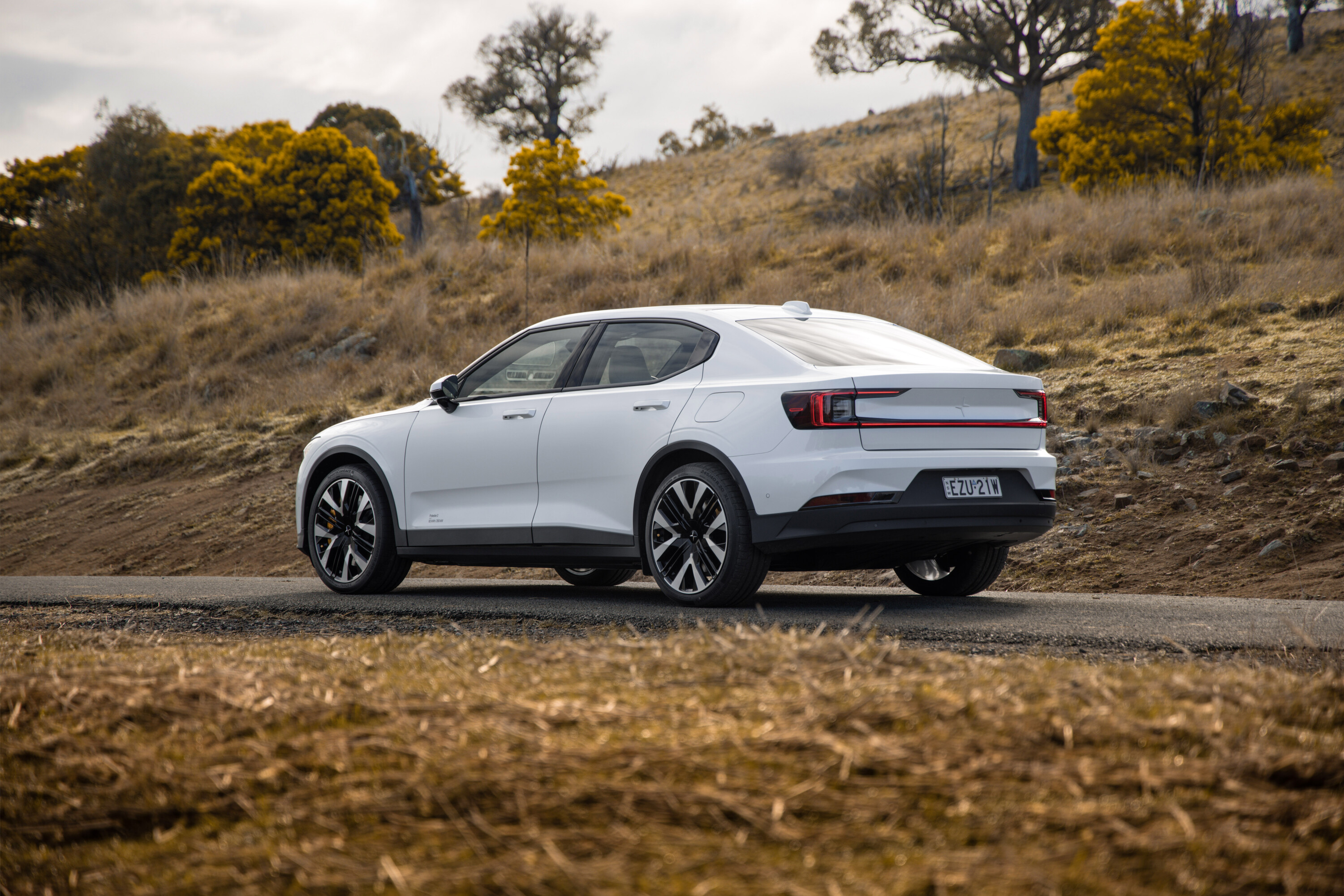
And it’s not that much more expensive than before, up by between $2400-3500 depending on variant.
For that, you get stacks more power from new motors, as well as a retuned chassis, lower carbon footprint (from 27-23 tonnes of CO2 used to make it) and more safety tech as standard.
That’s not even the best bit – the switch from front- to rear-wheel drive for single-motor variants (just like the platform-share Volvo C40 and XC40 EVs) transforms the Polestar 2 driving experience. This is now the electric sedan it always should’ve been. Had this contested our 2022 Car Of The Year instead of the pre-update Polestar, it may well have seen off the Kia EV6…
The Polestar 2’s driving experience is everything you could want from an electric sedan.
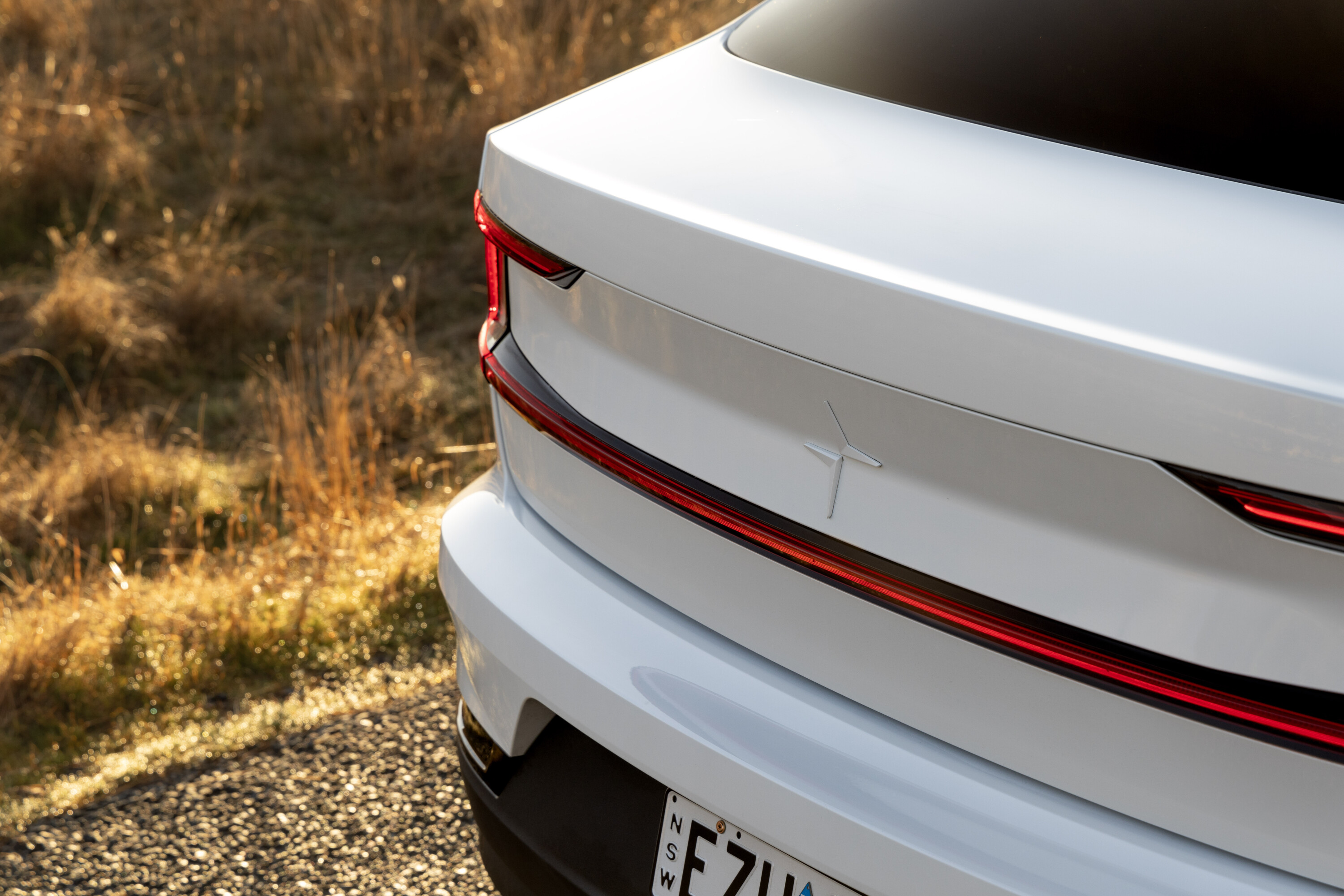
JUMP AHEAD
- How much is it, and what do you get?
- How do rivals compare on value?
- Interior comfort, space and storage
- What is it like to drive?
- How much energy does it use?
- How safe is it?
- Warranty and running costs
- VERDICT
- Specifications
How much is it, and what do you get?
Polestar’s press release undersells the updates for its lifted sedan, partially because the visual changes extend to the blanked-off ‘SmartZone’ grille that houses the radar and camera, and new alloy wheel designs.
Inside is much the same with cloth upholstery in Charcoal or Zinc paired with 3D-etched plastic inlays and a leather-appointed steering wheel.
Tech includes an 11.2-inch touchscreen and 12.3-inch digital driver’s display both powered by the Android Automotive operating system that features Google Maps and downloadable apps such as Spotify via the Google Play store as well as over-the-air software updates.
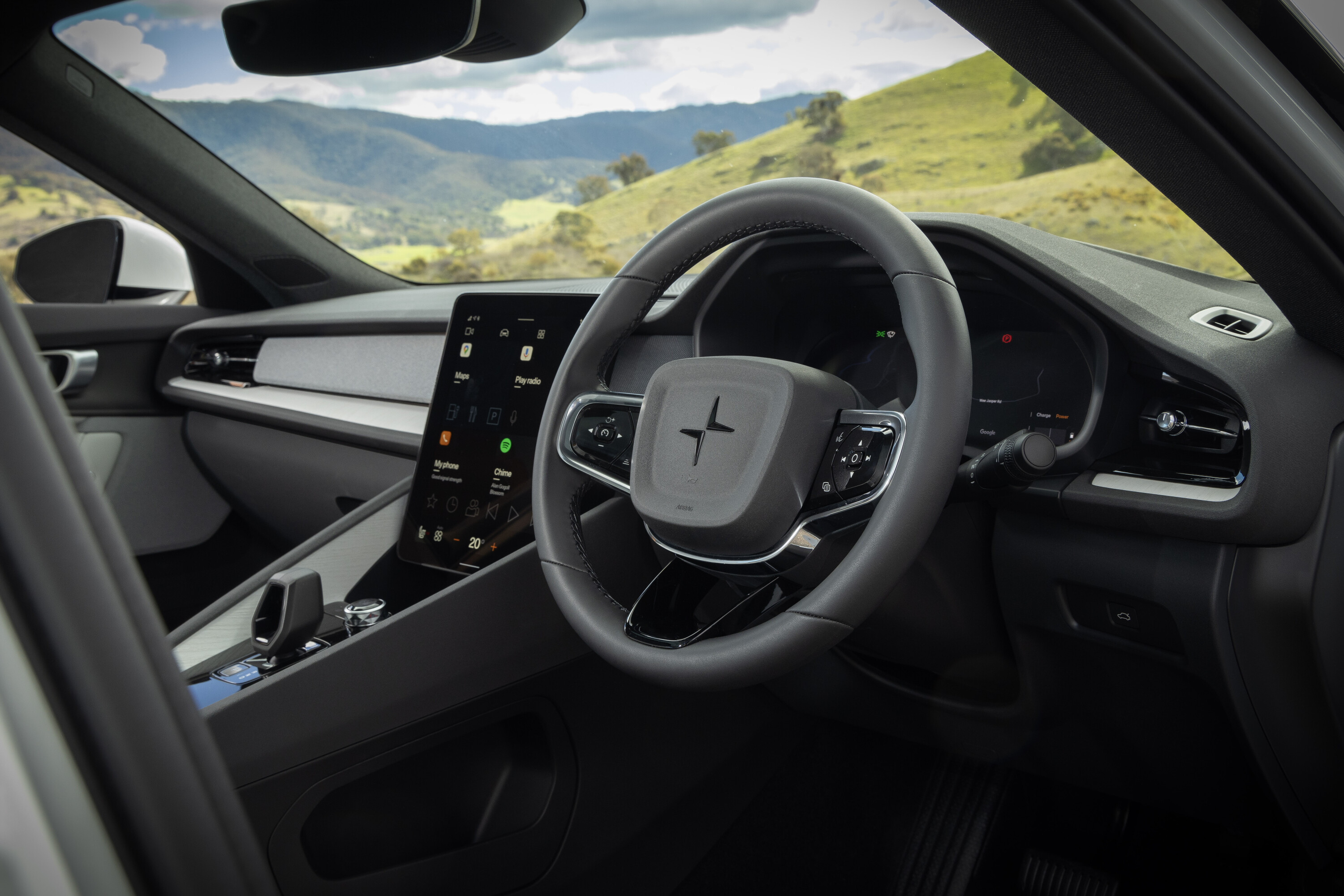
Wired Apple CarPlay (via one of two USB-C ports) capability was added in a software update prior to the MY24’s launch, and all Polestar 2s now feature a 15-watt wireless charging pad.
Unfortunately, there have been some losses from standard specification – the kick-to-open tailgate is now reserved for Plus Pack buyers (though powered hatch opening/closing remains standard), as is the digital key.
Additionally, our test vehicle featured the jewel in the Polestar 2 crown – $6000 worth of sustainably sourced ‘Zinc’ coloured Nappa Leather upholstery from Scottish company ‘Bridge of Weir’. These chairs are teamed with three-stage seat ventilation and, with the Polestar’s glass roof, this option’s worth ticking if you live north of Canberra.
The total price? That’s $86,900 before on-road costs. Not cheap, though it does handily slip in beneath the higher $89,332 LCT threshold for 2023-24 and with novated leasing and FBT incentives for EVs, it’s more affordable to pay off a loan on a Polestar 2 than an equivalently-priced piston vehicle.

How do rivals compare on value?
It’s a bit of a shame that the largest $3500 price increase afflicts the base model, meaning the Polestar 2 range opens a flat $10K more (at the time of publishing) than the cheapest Tesla Model 3.
And, as Dres said in Black Sheep’s 1991 track, “The Choice is Yours”, you can’t beat that with a bat – if you want a cheap EV today, Elon’s got you covered.
However, Polestar has no intentions of playing the volume game against Tesla; that’ll be up to someone else.
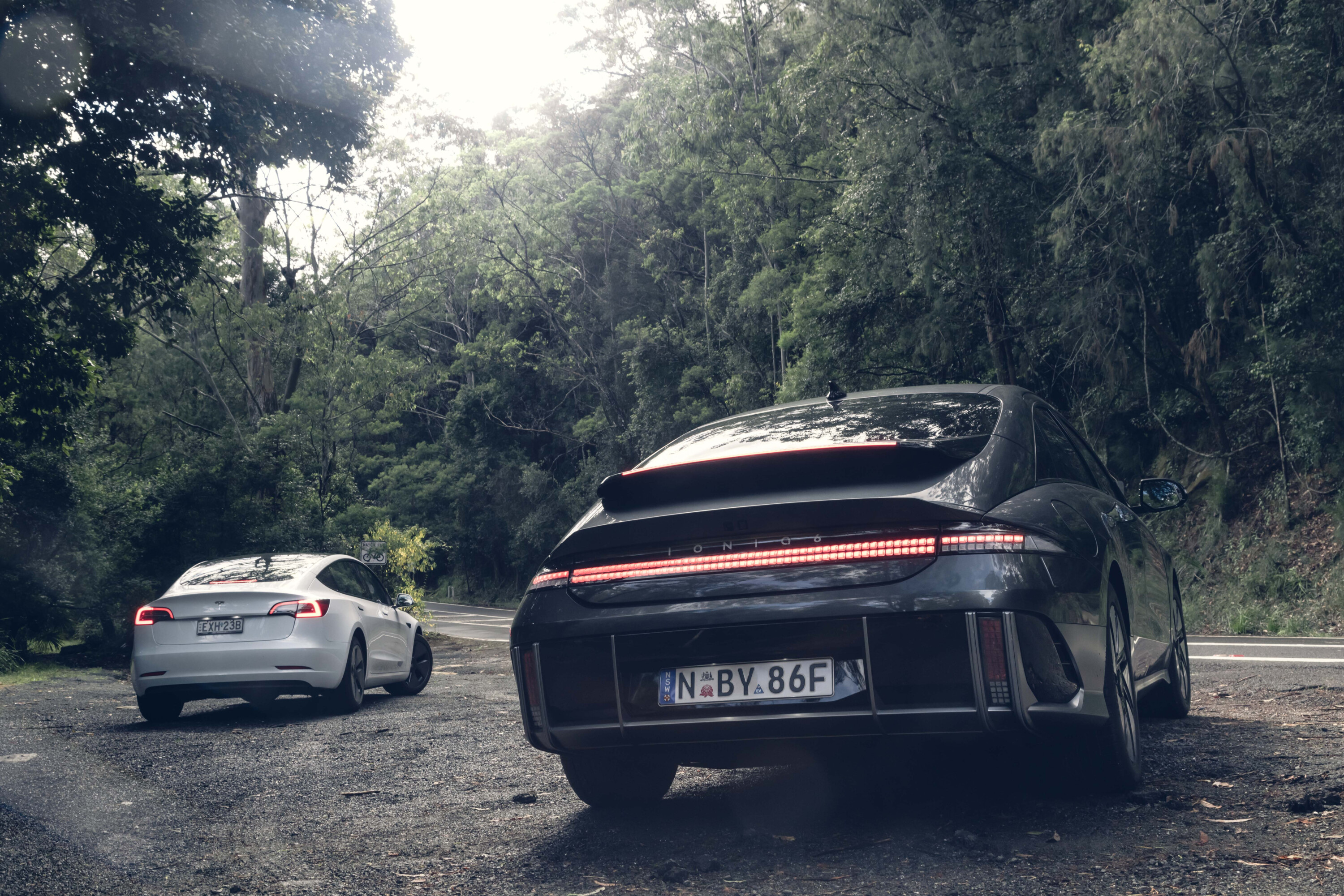
The 2 sedan is also good value next to other rivals – each variant is more affordable than the equivalent Hyundai Ioniq 6 while providing more performance and slicker cabin design (if a little less space).
Even compared to premium piston sedans, the Polestar seems good value. A slower BMW 320i with cloth seats starts at $80,200 these days, a Mercedes-Benz C200 $78,900 and an Audi A4 35TFSI $69,100 (all before on-road costs). The premium Germans may offer a little extra polish in cabin materials, but when it comes to space and performance, the Polestar 2 is right on the money.
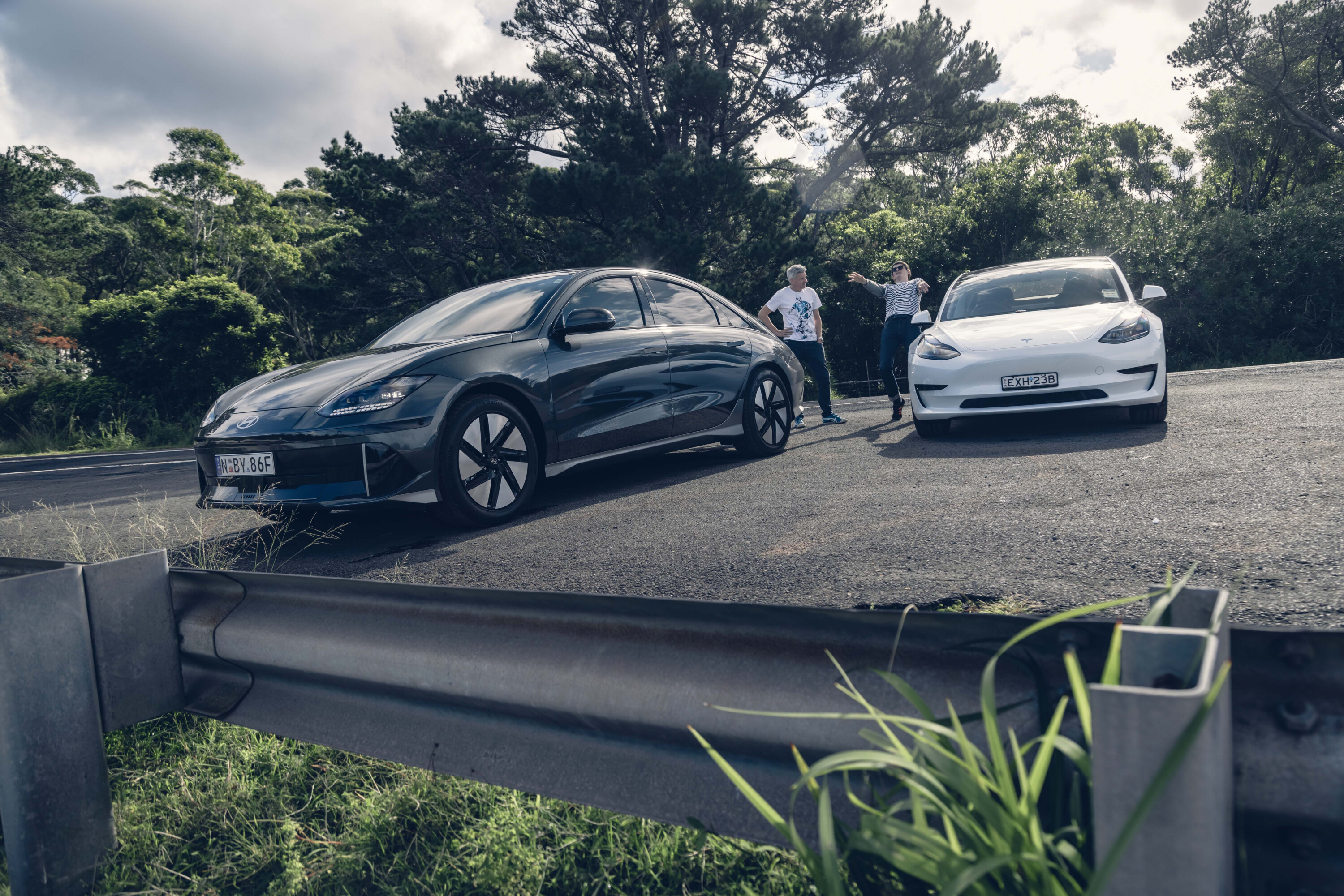
Interior comfort, space and storage
Unchanged from before, the Polestar 2’s cabin is a stylish and pleasing place to sit, especially when optioned with the Plus Pack’s seat heating and tactile Open Pore Black Ash wood trim.
The power-adjustable seats (eight-way driver, four-way passenger) feature pull-out leg extensions that are great for longer-legged people. The driving position is very natural, and thanks to a high-set dash and cocooning door cards you don’t feel like you’re sitting ‘on’ the Polestar 2 as you do in a Tesla Model 3 or Hyundai Ioniq 6.
Although Polestar has tried hard to make the most of compact cabin storage, the 2 doesn’t have the same open-plan layout as rivals.
The door bins are rubber padded and fit 700ml water bottles snuggly (minimising rattles), but that small wireless charging pad, single exposed cup holder with a second you can open by flipping back the centre armrest and small accessory spaces on the side of the centre console don’t provide much storage.
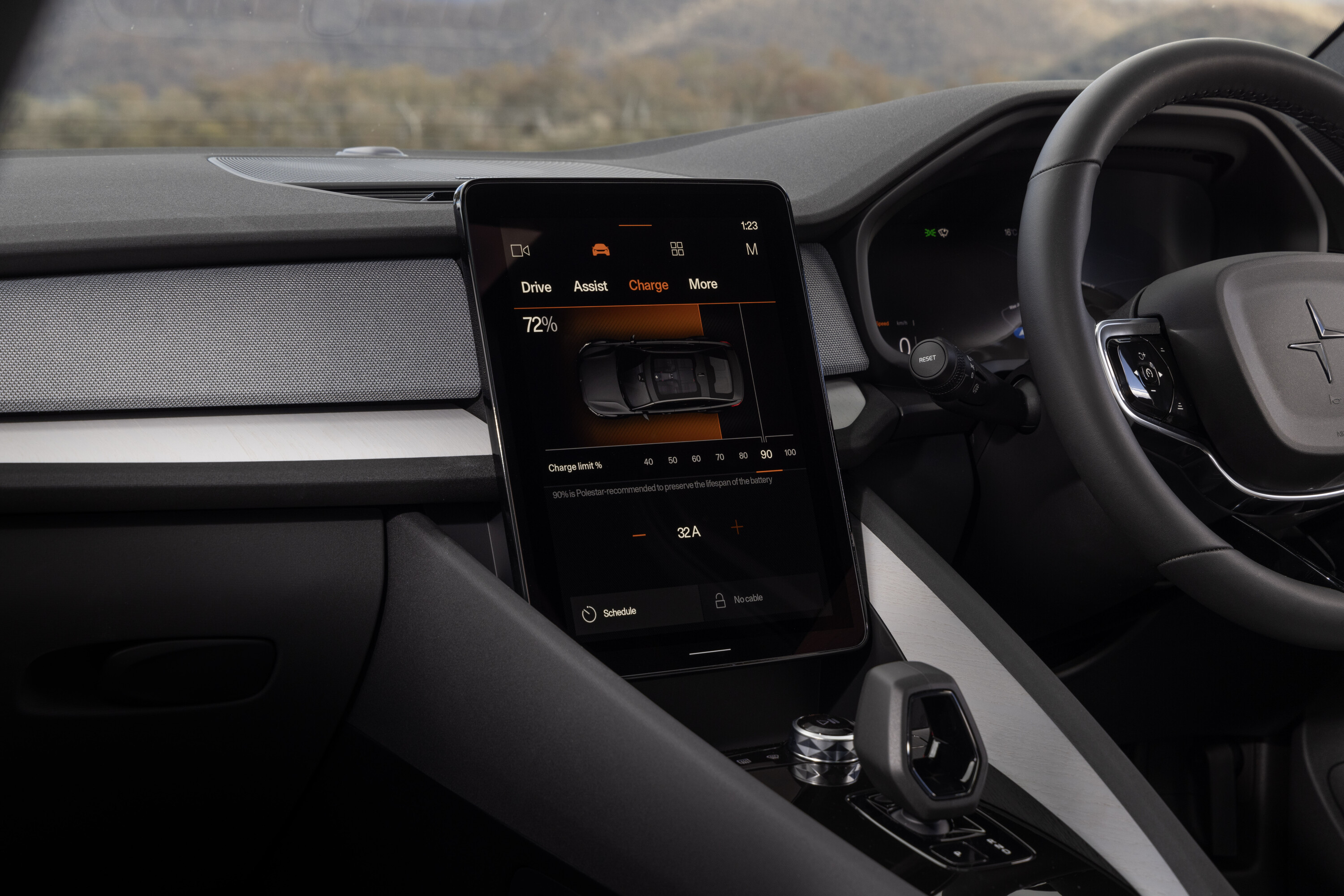
Tactile materials abound; pleasingly textured firm plastic trim, the grippy rubberised gear selector and upholstery all feel quality.
Polestar’s ‘Weavetech’ seat material grips the bum nicely in corners but tends to get hot in the sun, while the optional Nappa leather is incredibly soft and satisfying to sit in.
As Polestar hasn’t updated the 2’s roofline, its Achilles heel remains. Rear-seat passengers are well served for amenities with another two USB-C charge points (for a total of four) and vents but headroom is dead tight for those over 175cm.
While legroom is agreeable for a medium sedan, there’s not much toe room beneath a fully lowered front chair. The high floor means your knees tend to dangle in the air, and the view out isn’t great owing to the cocooning front seats.
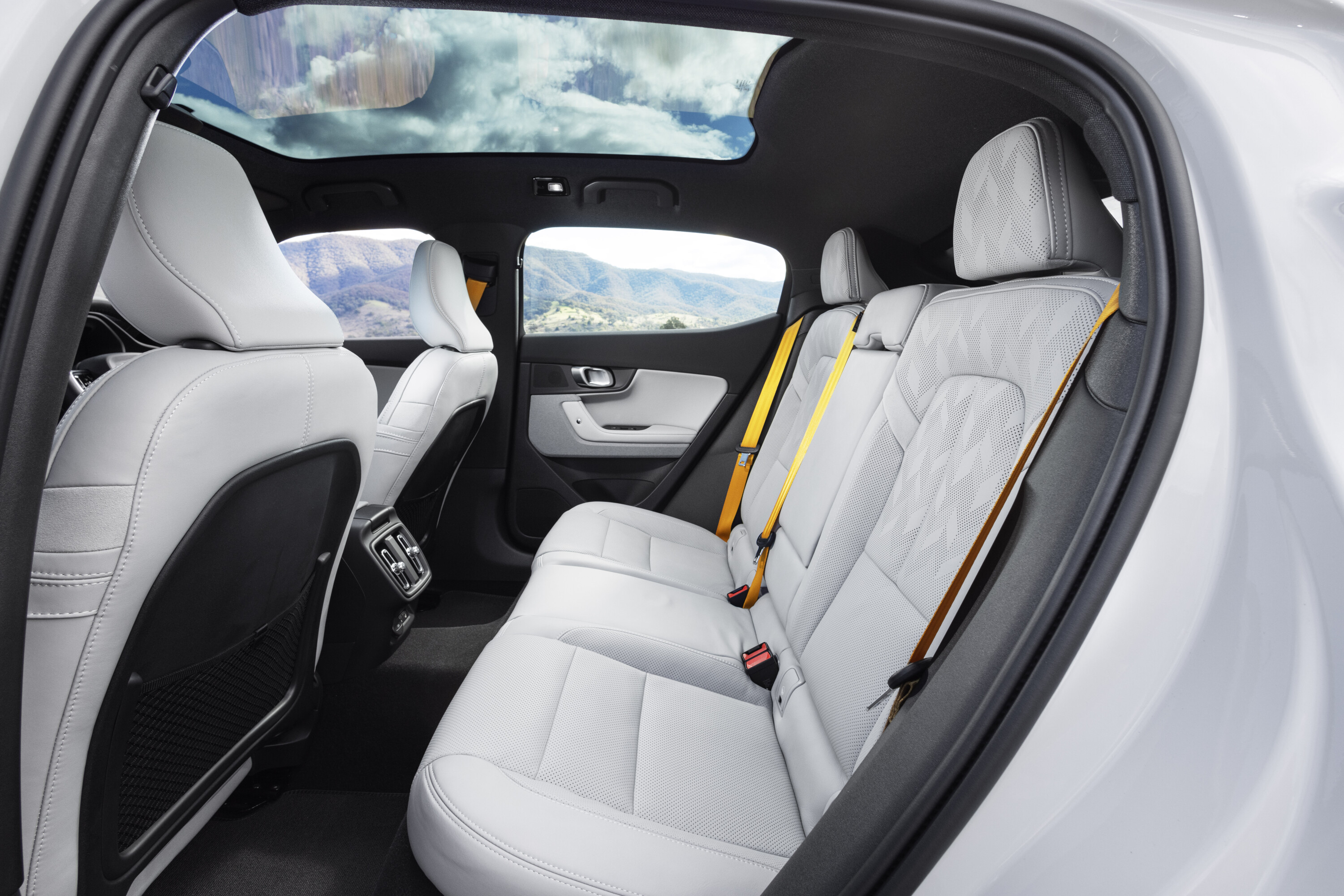
Polestar has improved its cargo storage. The front boot (or frunk) grows by six litres (now 41L) in size and remains perfect for charging cables.
Behind a generous rear hatch opening, the Polestar’s 405L boot retains the clever cargo divider with elastic storage bands to hold delicates.
There’s still no space for a spare wheel under the boot floor, although with the new motors Polestar has been able to make the 41L sub-floor more conventional in shape to make it more usable for valuable items you need to keep away from prying eyes.
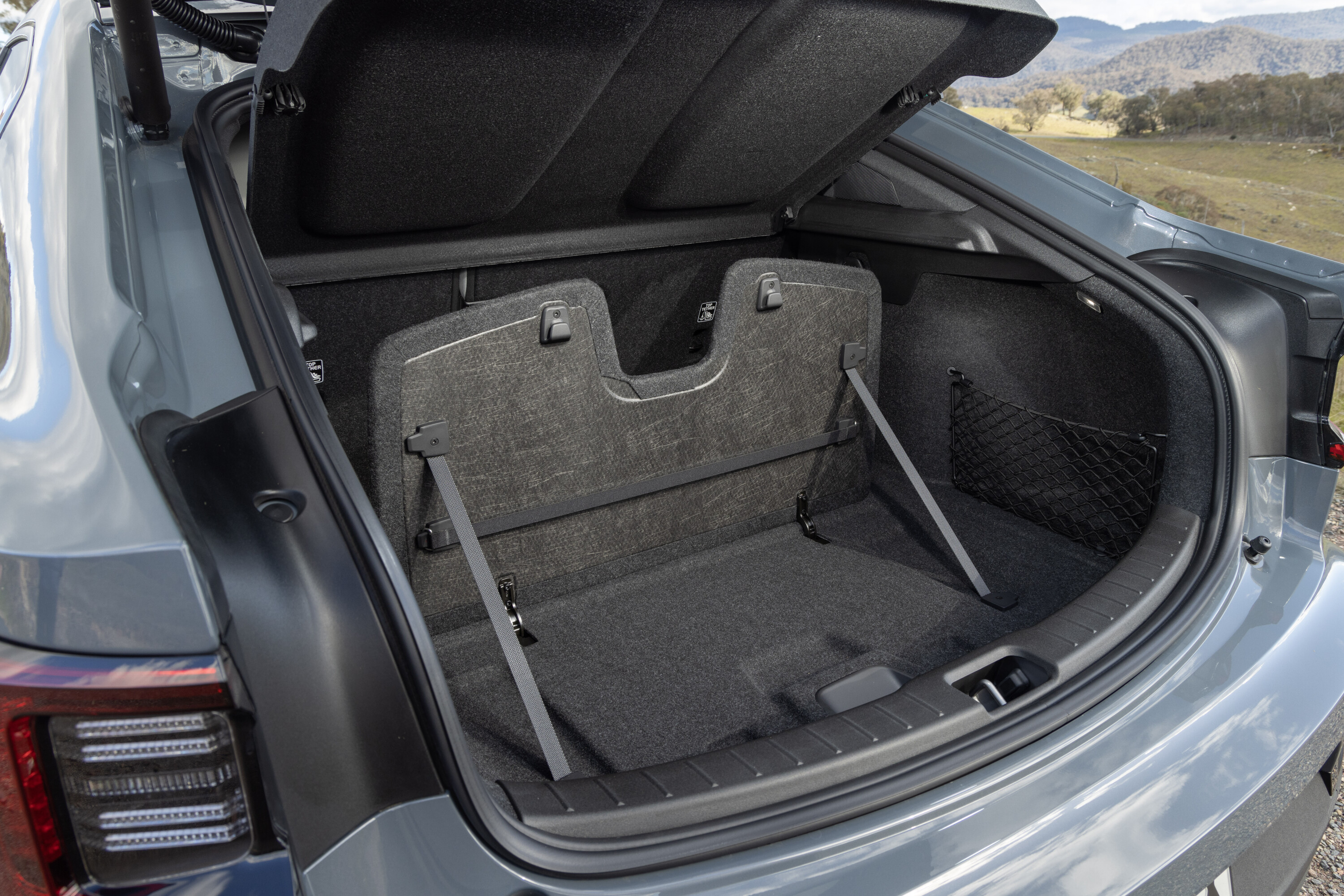
What is it like to drive?
The cabin could still do with a little improvement, then, but the Polestar 2 driving experience? It’s everything you could want from an electric sedan at this price.
Polestar says the chassis has been “recalibrated for MY24 to offer a more refined ride in tune with the drivetrain updates… and is now complemented by a higher level of comfort”.
This is accurate, but it diminishes the extent of the changes.
Canberra’s lumpy suburban roads used to kick the Polestar 2’s rear end around something fierce. The MY23’s stiff springs and strict rebound control made the ride tiring for front passengers and borderline spew-inducing for those in the back.
Immediately, the MY24 Long Range Single Motor is cool and composed; the redistributed weight must have been paired with new spring/damper settings to improve things this much.
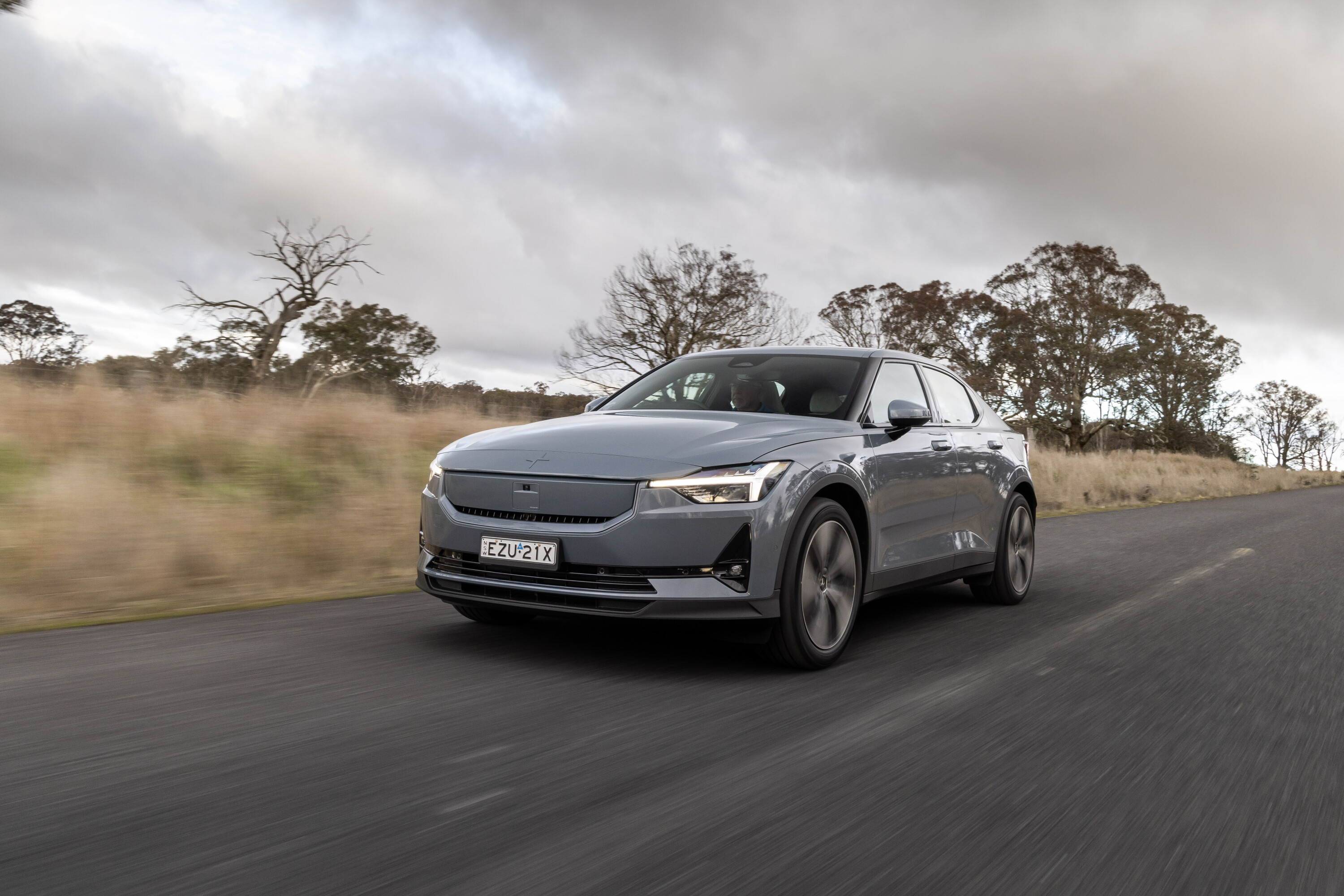
There’s a small amount of mid-corner understeer, which helps gauge grip levels that can now be neutralised with the throttle.
Another noticeable change is to the steering. Now free from the peril of administering torque, the front axle is uncorrupted and calm. There’s still no textural feedback through the Polestar 2’s EPAS, but the rack is accurate, light and pleasant to use.
Outputs are up, too, courtesy of the new rear-mounted permanent magnet motor made by Volvo. The Long Range Single Motor we’re driving climbs 50kW and 160Nm to 220kW/490Nm – a pretty massive change resulting in a 0-100km/h sprint time of 6.2 seconds.
Polestar’s drivetrain calibration is typically excellent with three settings for regen (off, Low and Standard) and your choice of ICE-simulating creep on or off.
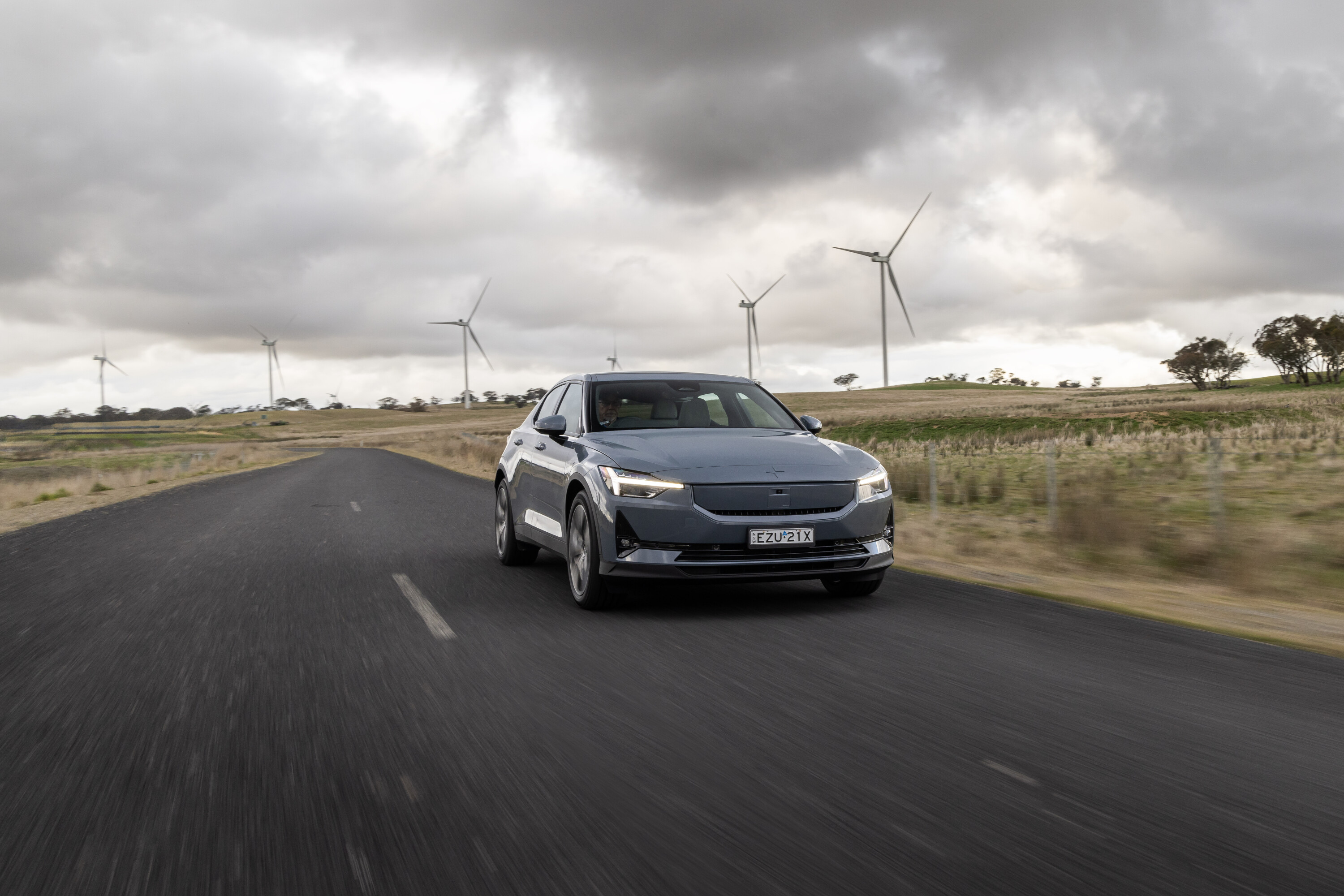
Switch the car’s ESC into Sport mode and you can over-rotate the rear wheels for a bit of classic front-engine rear-drive oversteer.
The switch to rear-wheel drive has adjusted regen characteristics. There’s no longer quite the same bite as you lift off the throttle in one-pedal mode (to minimise the potential of locking the rear wheels in slippery conditions), though this is a positive. It’s now easier to arrest the Polestar 2 without the brake pedal, and there’s less potential for the dreaded ‘taxi foot’.
Natural is the best way to describe the Polestar 2’s chassis. At speed the Polestar 2 absorbs bumps effortlessly, tipping into corners, while the reassuring steering and minimal body roll (for a 2009kg sedan) provide confidence. There’s a small amount of mid-corner understeer, which helps gauge grip levels that can now be neutralised with the throttle.
Switch the car’s ESC into Sport mode and you can over-rotate the rear wheels for a bit of classic front-engine rear-drive oversteer. Perhaps not relevant to the average EV driver, but a bloody good bit of fun.
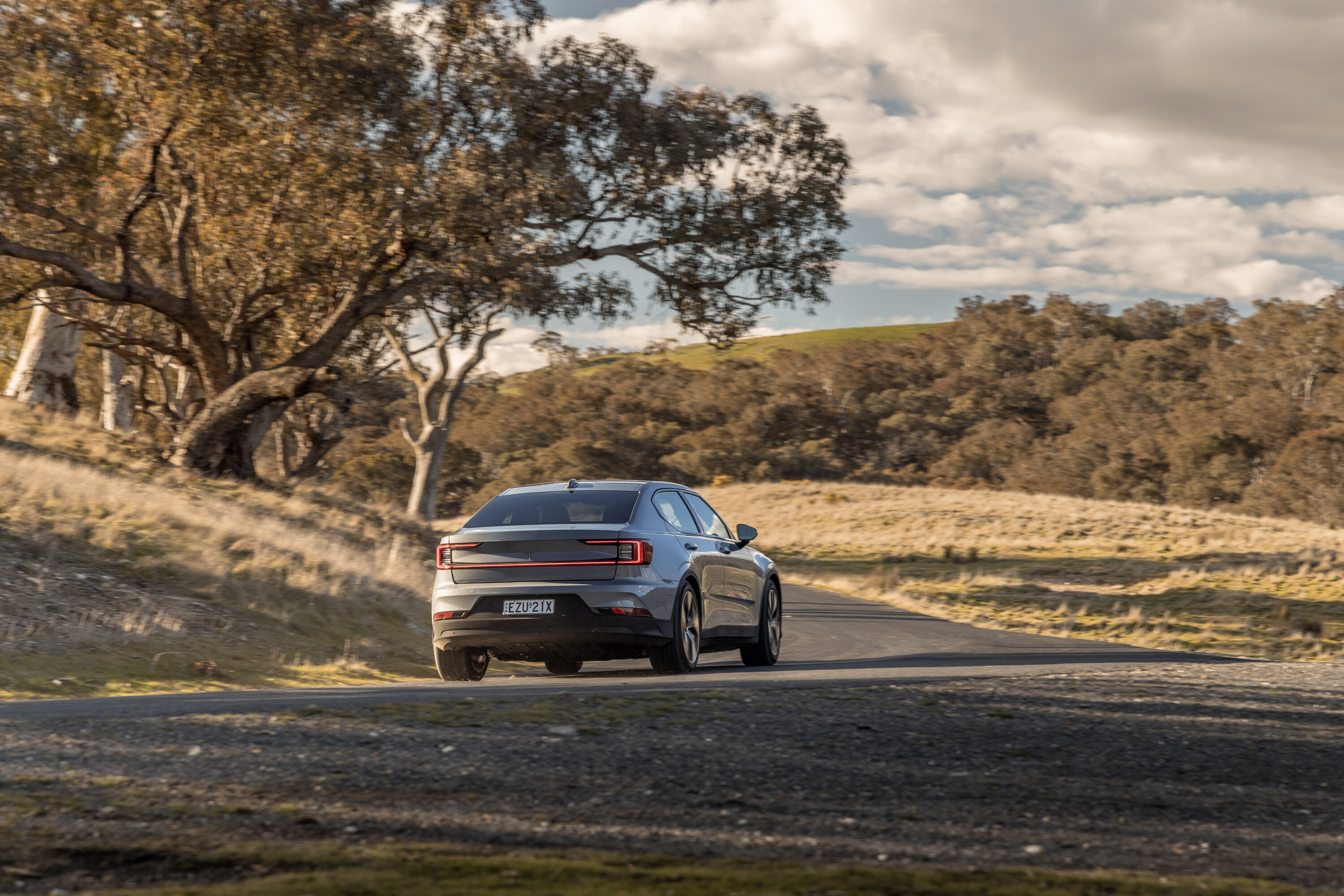
Leave Polestar’s pre-emptive traction control switched fully on and it elegantly limits slip without curtailing fun on a twisty road.
Although not detailed in Polestar’s literature, the new 2 is also quieter at high speed. Perhaps because the smoother suspension action doesn’t introduce so much bump-thump (especially on the 19-inch alloys wrapped in 245/45 Michelin Primacy rubber), though we suspect some strategic sound deadening has been added.
After spending a little over two hours in the Single Motor, we sampled the Dual Motor. It’s ferociously quick off the line having gained 10kW (350kW) and 80Nm (740Nm) from before – for a 0-100km/h sprint of 4.2 seconds.
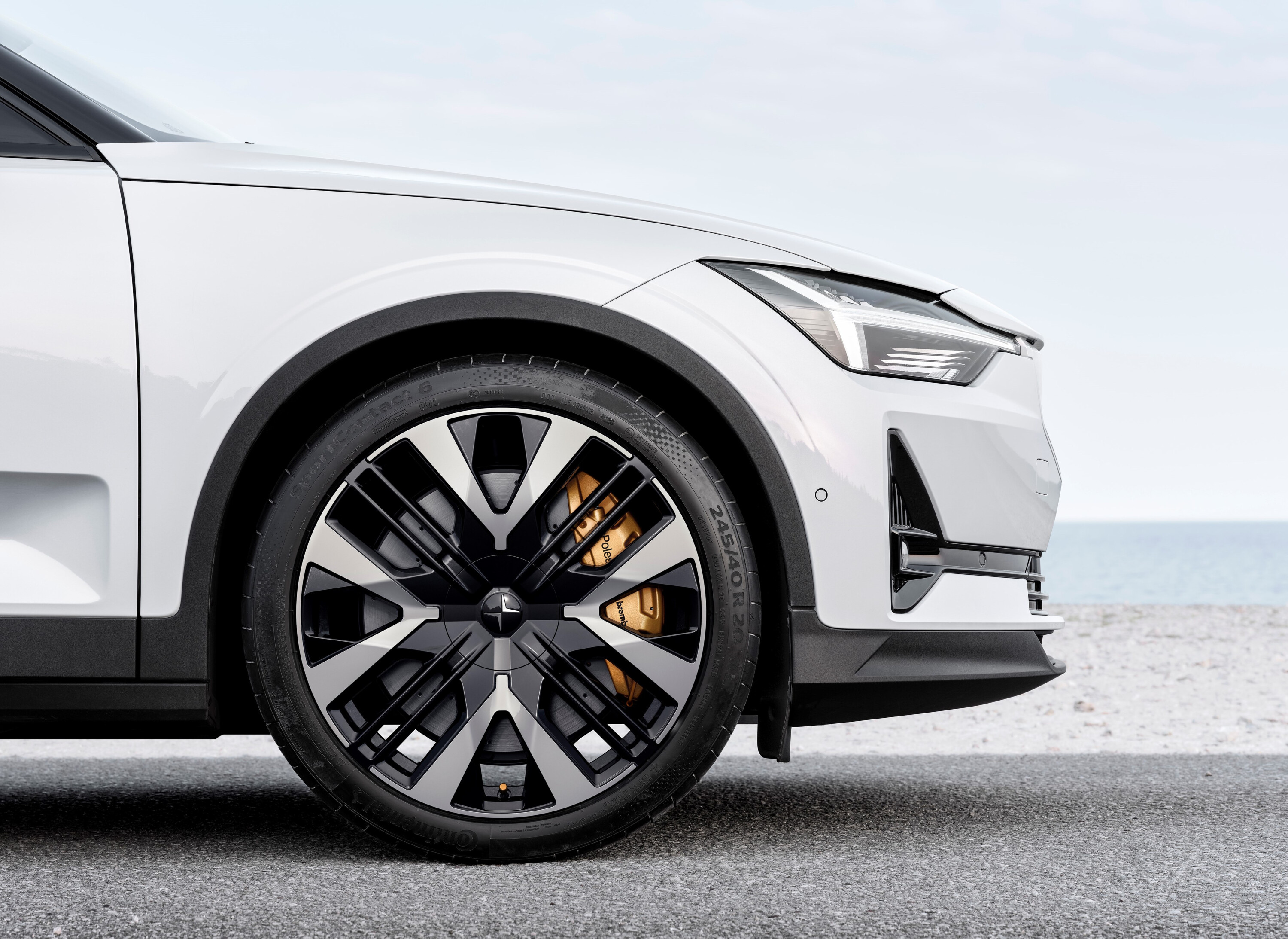
The commanding all-paw traction from before is still there, but with the rear motor being overdriven the new car’s a touch more playful.
Recalibrated for this update, the adjustable Öhlins coilovers that come with the optional $9000 Performance Pack are delightful, now with more low-speed compliance and the same unflappable composure at high speeds despite redesigned 20-inch alloys fitted with low-profile 245/40R20 Continental SportContact 6 tyres.
It’s just a shame that with regenerative braking you rarely indulge in the excellent feel of those sexy ‘Swedish Gold’ four-piston Brembo front brake calipers and that tapping into the Dual Motor’s grunt absolutely grenades the battery range.
If any of the terms in this section have left you scratching your head, these articles will help bring you up to speed!
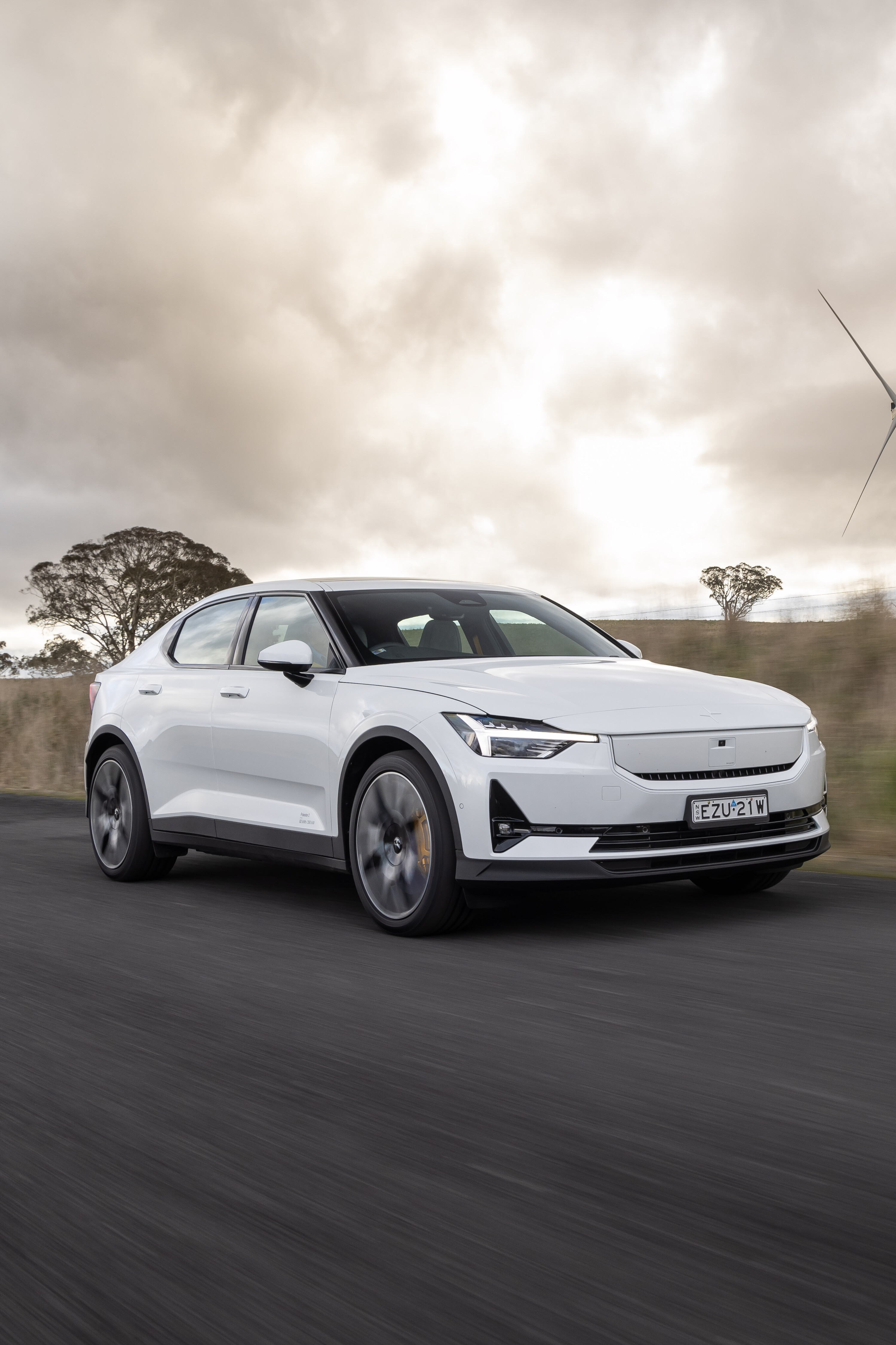
- What is a Powertrain or Drivetrain?
- Power vs torque
- Car suspension explained
- Automatic transmissions (‘gearboxes’) explained
- Chassis control systems explained
- Car vs Ute vs SUV: How the vehicle you buy should guide the way you drive
Previously one of the Polestar 2’s flaws, we always found it tricky to achieve figures close to the MY23’s WLTP driving range rating.
Exemplified on the drive down to Canberra in a MY23 Dual Motor with Performance Pack that averaged 20.4kWh/100km for a 366km real-world range, the new vehicle promises to be better.
The WLTP rating for the Polestar 2 Long Range Single Motor climbs by 103km to 654km thanks to a larger battery and more efficient motors. That’s the longest of any EV on sale in Australia, including Mercedes’ ultra-slippery EQS, provided you can nail 12.1kWh/100km.
On a hilly, twisty test loop the LRSM averaged 18.3kWh/100km for a projected driving range of 432km on a full charge of the now-larger 79kWh (82kWh gross) CATL-produced NMC battery pack – expect closer to 550km in regular driving scenarios.
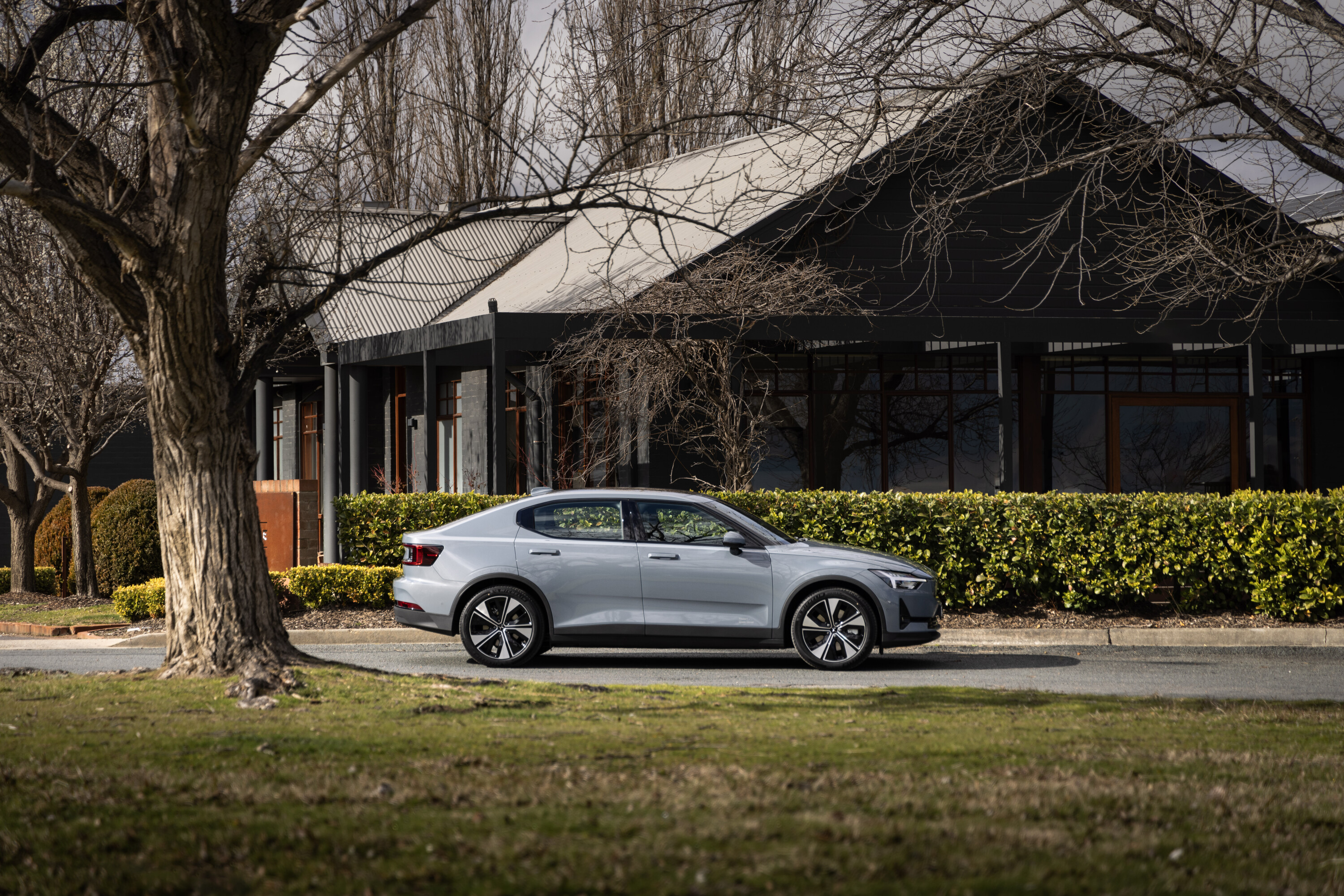
The Dual Motor drops to 591km (or 568km with the Performance Pack). Choosing the 200kW Standard Range model (a 67kWh NMC battery from LG Chem) still brings a serviceable 532km driving range figure.
Polestar’s 400V electric architecture caps maximum DC fast-charging speed at 205kW for the larger and 135kW for the smaller battery, meaning 28- and 34-minute 10-80 per cent charge times respectively.
Home and AC public charging remains capped at 11kW. Expect a full charge from flat to take seven (67kWh battery) or eight (79kWh) hours on a home wallbox.
Using Polestar’s connected smartphone app (that doubles as a digital key) owners can lock and unlock the doors, pre-condition the cabin and control charging times to take advantage of off-peak energy prices or peak solar action.

How safe is it?
The MY24 Polestar 2 carries a 2021 five-star ANCAP stamp, though more safety equipment is included as standard for this mid-life update.
Based on customer feedback and uptake rates on the previous Pilot Lite pack, Polestar now fits blind-spot monitoring, front and rear cross-traffic alert, low-speed reverse AEB, 360-degree top-down camera and auto-dimming for the sexy frameless wing mirrors.
Forward AEB and lane departure warning remain standard. Those after extra convenience still need to opt for the Pilot Pack, though, as adaptive cruise control and lane-trace assist are tied up in that package along with adaptive ‘Pixel’ LED headlights.
Likely fine in Europe (and perhaps Scandinavia) where speed laws are less draconian, the Polestar 2’s cruise control could do with being more precise. On long downhill runs, the speed governing system will occasionally allow the Polestar 2 to exceed the selected speed by up to 4-5km/h – enough to cop a speeding fine in any one of Australia’s strictly monitored tunnels.

Warranty and running costs
The Polestar 2 is covered by a five-year, unlimited-kilometre warranty.
Both CATL and LG Chem batteries are covered by eight-year/160,000km manufacturer guarantees, and Polestar covers rust and perforation issues within the first 12 years of ownership.
Onboard connected services and roadside assist are included for three years. Servicing is included for five years or 100,000km of ownership, with Polestar recommending you drop by every 24 months or 30,000km for a status check.
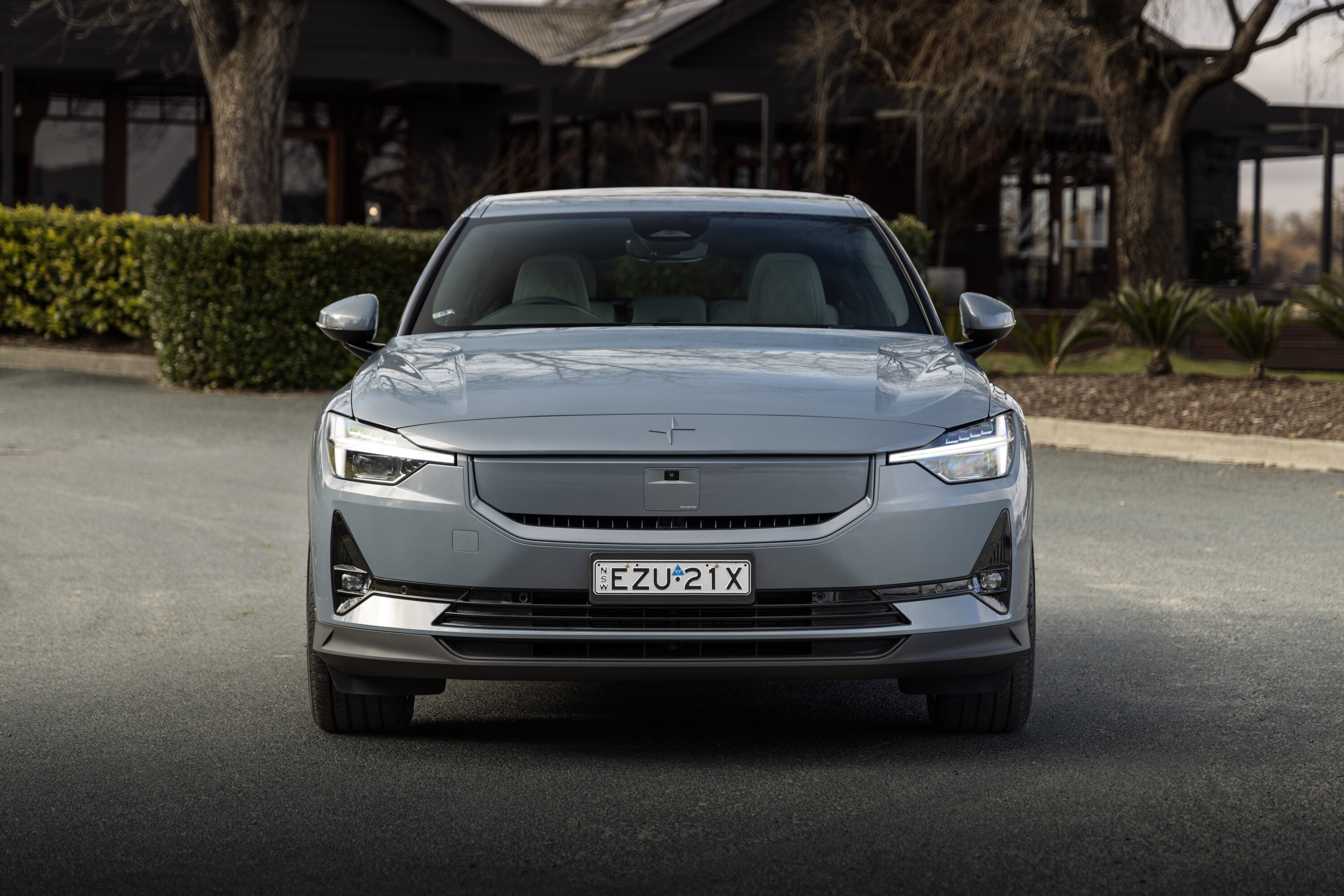
VERDICT
Cramped back seat and compromised cabin storage aside, the Polestar 2 was already one of the very best electric vehicles on sale.
The brand has near-silently addressed some of the niggling issues – such as compromised real-world range and a busy, frustrating ride – that prevented it from being the best in its price range.
From an enthusiast’s standpoint, the Long Range Single Motor is also one of the most engaging drives out there, too. Minimal body roll, brisk pace and the sort of front-engine rear-drive balance that makes the BMW 3 Series such an excellent driver’s car.
And it just happens to be produced by a company that’s heavily invested in lowering pollution to slow down the demise of humans.
Perfect the Polestar 2 is not (what is?) but the Swedes (and their Geely paymasters) can rest easy knowing this sedan is now the vehicle it should have always been.
More EV stories to help you choose the best car for your needs
- ? EV news, reviews, advice & guides
- ❓ Short & sweet: Your EV questions answered
- ⚡ New EVs: Everything coming to Australia
- ? Australia’s EVs with the longest driving range
- ⚖️ Best-value EVs by driving range
- ? How much do EVs cost in Australia?
- ? How much more expensive are EVs?
- ⚖️ Number crunching: Is it time to switch to an EV?
- ♻ Should you buy a used EV?
- ?️ Are EVs more expensive to insure?
- ? Costs compared: Charging an EV vs fueling a car
- ? EV charging guide
- ? Are there enough EV chargers in Oz?
- ?? EV servicing explained
- ? EV battery types explained
- ? When do EV batteries need replacing?
- ? Hydrogen v EVs: What’s best for Oz?
- ✋? Mind your manners! EV charging etiquette tips
- ? How sustainable are EVs, really?
MORE advice stories to help you with buying and owning a car
| 2023 Polestar 2 Long Range Single Motor | |
|---|---|
| Price | $71,400 + on-road cost |
| Price (as tested) | $86,900 + on-road costs (Pilot Pack, Plus Pack, Nappa Leather) |
| DRIVETRAIN | |
| Layout | single motor RWD |
| System power | 220kW |
| System torque | 590Nm |
| Gearbox | single speed reduction gear |
| DIMENSIONS | |
| Body | 5-door, 5-seat medium liftback |
| L/W (inc mirrors)/H | 4606/1985/1479mm |
| WB | 2735mm |
| Weight | 2009kg |
| Boot | 401L + 41L frunk |
| Battery usable (gross) | 79kWh (82kWh) |
| Driving range | 654km (WLTP) |
| Charging (AC/0-100%) | 11kW / 8h |
| Charging (DC/10-80%) | 205kW / 28m |
| Suspension | struts, coil springs (f) / multi-link independent, coil springs (r) |
| Steering | electric rack and pinion |
| Tyres | Michelin Primacy 4 |
| Tyre size | 245/45R19 |
| SAFETY | |
| ANCAP rating | 5 stars (2021) |
| PERFORMANCE | |
| 0-100km/h | 6.2sec (claimed) |
Score breakdown
Things we like
- Much-improved ride quality
- Same sexy cabin design with excellent tech integration
- Rear drive layout heightens driver involvement
- Easy ownership and faster charging
Not so much
- Cramped and dark rear seat
- Dual Motor Performance still thirsty for electrons
- Limited cabin storage
- Adaptive cruise control still optional
We recommend
-
 Advice
AdviceWhich are the longest-range electric cars in Australia?
These are the longest driving range EVs on sale in Australia today, plus everything you need to know about range claims
-
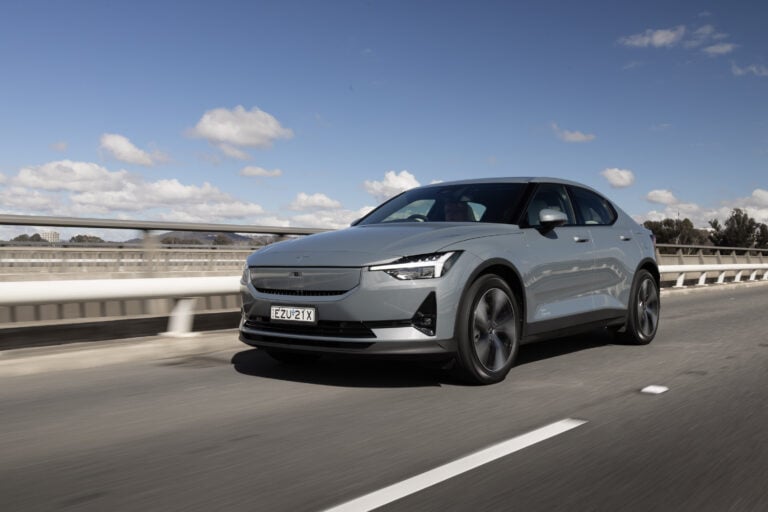 News
News2024 Polestar 2 pricing and features: Rear-drive sedan arrives
The updated Polestar 2 goes rear-wheel drive and adds plenty of range
-
 Advice
AdviceAustralia's best electric cars for 2023
We’ve tested nearly every EV below six figures in Australia to rank the best on sale today




